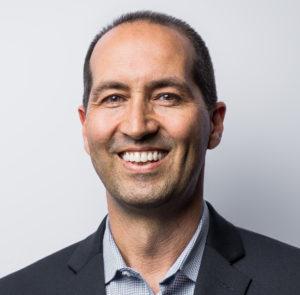
By Keith Reynold Jennings {grow} Contributing Columnist
My entire career has been dependent on an ability to get people to try, buy or donate to things that might seem unnecessary or inconvenient. Selling powerful ideas is hard work that demands head and heart. And I’ve failed much more than I’ve succeeded. (I’m betting you have too.)
Whether you’re in marketing, sales, fundraising, recruitment, volunteerism, leadership, or even a parent, your success depends on your ability to get others to take action, whether that’s trying, buying, changing, donating, or doing something new.
The problem is that it is becoming almost impossible to connect to people in the moment when there are so many fun distractions in this digital world — especially when you’re trying to tell them or sell them.
But there is a way to overcome this.
Two powerful ideas
When I think of professionals “out there” who, week-after-week, are on the line for getting people to do something they don’t want to do, I can’t help but think of preachers and direct marketing copywriters.
Every time they do what they do, they know instantly whether it worked. Did someone give their life to God? Did someone try or buy?
I look for authorities and models who have sustained success over at least a decade or two. I’m not interested in one-hit-wonders or those who were at the right place at the right time when a platform or trend took off.
Over the years, when it comes to crafting messages that compel action, I’m inspired by the work of Mark Ford and Andy Stanley. We’ll discover simple patterns these masters use to sell their ideas.
Step 1: Focus Your Message on the “Power of One”
Co-founder of American Writers & Artists, Inc., Mark Ford enjoyed a very successful career as a direct marketing copywriter, author, publisher and real estate investor (among other things). He has mentored many A-list advertising copywriters.
Years ago, Ford had an “aha moment.” As he evaluated articles he had published within the year to see which ones readers rated the highest, he discovered that those with the highest scores focused on a single idea.
Those that didn’t perform as well took a more kitchen sink approach — “Here’s everything-you-need-know about this topic.”
This made him wonder if the same phenomenon existed with advertising copy. It did.
The more Ford looked into this, the more he uncovered the power of a single idea everywhere he looked. He came to call this the “Power of One.” Here are the five necessary elements, according to Ford:
- One big idea — What’s the one thing prospects need to know?
- One driving emotion — How will this affect how they feel?
- One captivating story — Who is an authority on or beneficiary of this idea?
- One desired benefit — What can this idea help them achieve?
- One inevitable response — What should they do right now?
If you start with these five elements, it will force you to focus in a way you can leverage the Power of One. Each time I start with this, I discover that my ideas are all over the place, because I want to share as much as possible.
The beauty of the Power of One is that it challenges you to hone-in on a single, compelling idea your audience can immediately grasp.
And now that you’ve focused in on your one big idea, it’s time to frame that idea into a narrative that drives action.
Step 2: Frame Your Narrative Using “Me-We-They-You-Us”
Andy Stanley is the founder and senior pastor of North Point Ministries, which has seven church campuses around Atlanta and 90 network churches worldwide. North Point is the second largest church in the U.S., as far as I can tell, and touches around 185,000 people weekly.
Stanley has developed a sermon structure that consistently and effectively plants simple, actionable ideas into congregants’ heads. So as they face challenges in their daily lives, they are able to quickly recall and apply God‘s teaching. Stanley calls the structure “Me-We-God-You-Us.” Here’s how it works for Stanley:
- Me: Let me tell you something about me
- We: I’ll bet this is something we all have in common
- God: Here is what God says about it
- You: This is what you need to do about it
- Us: Wouldn’t it be great if we all did this?
Of course, you and I aren’t preaching the Gospel. So we can frame our business narratives using Me-We-They-You-Us:
- Me: Let me tell you about a problem I’ve had
- We: I’ll bet you’ve experience this problem too
- They: Here’s what authorities on this topic have to say
- You: Here are some steps you can take to address the problem
- Us: Imagine how much better things would be if we all addressed this problem
How to Focus and Frame Your Next Message
One of the things I hate about so many articles I read is that you rarely get to see someone apply what they’re teaching. So let’s fix that!
My current problem: I need to re-focus the presentation I give to our new company associates during their full-day orientation. The presentation I’ve been giving is good — it has consistently received strong scores — but it’s not great. The reason it’s not great is that people have connected emotionally with what I’ve presented, but they’ve not consistently taken action afterward.
My metric is activation, not satisfaction. I want the majority of new hires to take action and get involved serving in their community.
The problem I have is there’s so much I could share on how serving others drives job success, personal health and happiness, etc.! Where to start? What to focus on?
Here’s how I used Mark Ford’s “power of one” to focus my message:
- One big idea: The highest performing employees across companies and industries focus on helping others before helping themselves.
- One driving emotion: Work/life fulfillment
- One captivating story: According to Dr. Morten Hansen, research reveals that high performance is directly correlated with contribution, not satisfaction.
- One desired benefit: You can achieve success AND significance in your career
- One inevitable response: Choose one service activity to do in the next 30 days
Now let’s frame it.
- Me: I want to be successful in my work. But I want that success to mean something and matter to others.
- We: I’ll bet you wrestle with the same tension.
- They: The latest research reveals that serving others in and beyond your job impacts your success, happiness and sense of purpose.
- You: Here are some steps you can take today to start serving others.
- Us: Imagine if every associate in our company put others first and actively contributed to the well-being of others.
That’s a pretty powerful message! But it took a lot of work to get it to this place.
I’m happy to share that I gave this presentation at this month’s new hire orientation. It’s still too soon to say whether it was a success, but I received emails from some of the new hires within 24 hours of my presentation saying they had already taken action.
Normally, this would be the right point to bring this article to a conclusion.
But Wait! There’s More!
Here’s how I used Mark Ford’s “power of one” to bring focus to this article:
- One big idea: The “power of one” plus “me-we-they-you-us” are a powerful and proven way to influence action.
- One driving emotion: Success
- One captivating story: Lessons from a direct marketer and a pastor.
- One desired benefit: A lift in the number of people taking action.
- One inevitable response: Try using these techniques to focus and frame your next speech, article, email, team meeting, etc.
Then I applied Andy Stanley’s sermon structure to frame this article:
- Me: I’m continually in search of proven ways to influence people to take action.
- We: I’ll bet you deal with this too.
- They: Here’s how a direct marketer and pastor have successfully focused and framed their messages for decades.
- You: Here’s how you can apply these techniques to strengthen your messages.
- Us: (Keep reading below…)
Imagine how much more effective our marketing would be if marketers, salespeople, fundraisers, recruiters and leaders applied these powerful ideas before vomiting on us with their “messaging.”
I truly hope this has given you some inspiration to test drive these powerful ideas on your next speech, piece of content or sales pitch. Share this with your team and those you mentor to help them get to the next level in their work.
I’m curious, what technique or framework has consistently worked for you? What continues to help you influence others to take action? Please share your learnings with us in the comments. We’re in this together!
 Keith Reynold Jennings is an executive and writer who serves as vice president of community impact for Jackson Healthcare. He’s also an advisor to goBeyondProfit. Connect with Keith on Twitter and Linkedin.
Keith Reynold Jennings is an executive and writer who serves as vice president of community impact for Jackson Healthcare. He’s also an advisor to goBeyondProfit. Connect with Keith on Twitter and Linkedin.


